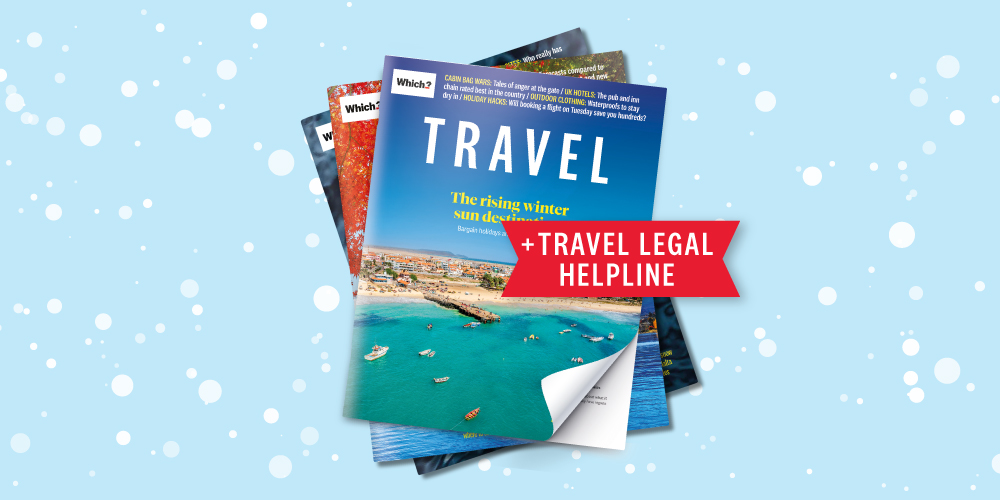
Get a year of super-useful advice
Who to book with, how to get the best deals plus inspiring destination ideas from the experts, for only £36.75 for the year – that’s 25% off.
Join Which? TravelOffer ends 8th January 2026
By clicking a retailer link you consent to third-party cookies that track your onward journey. This enables W? to receive an affiliate commission if you make a purchase, which supports our mission to be the UK's consumer champion.

In this article
The job of waterproof trousers is simple: keep you dry in a downpour. But not all outerwear is made equal. Just look at the results from our waterproof overtrousers survey, where bottom-of-the-table Peter Storm gained an overall score of just 62%.
That's why we've outlined how to choose a pair of overtrousers that will not only keep out the rain but won't leave you feeling clammy from sweat. Plus, what the perfect fit looks like, so you don't waste your money.
For more independent travel advice and recommendations, subscribe to Which? Travel
Berghaus and Rohan's waterproof trousers scored five out of five stars for waterproofness and four out of five for breathability in our survey of nearly 1,000 members who own overtrousers.
But there are cheaper options that still performed well in the overtrousers survey.
Waterproof coated overtrousers are often made from light materials, such as polyurethane. Coated trousers, while affordable, tend to be less breathable and less durable. If they're simply a 'just in case' option to pop into your backpack for any light showers, when you're walking short distances, or you don't want to carry something heavy – they'll suit.
Alternatively, opt for overtrousers made from microporous fabrics, such as Gore-Tex, IsoDry or eVent, to help with breathability. These fabrics contain a membrane with billions of microscopic holes too small for water to get through, but allow heat to escape.
Membrane trousers are best if you plan to hike during the rainy season or tend to go on long, strenuous hikes.
Not all brands use microporous membranes, though. Paramo creates waterproof trousers from Nikwax Analogy fabric. The fabric works a bit like an animal’s fur, directing water away from the body.

To ensure you stay dry, look for overtrousers with a hydrostatic head measurement of 5,000mm or more, which can withstand moderate downpours.
Lower hydrostatic head measurements are suitable for lighter, shorter showers, so they may be fine for the summer months.

Who to book with, how to get the best deals plus inspiring destination ideas from the experts, for only £36.75 for the year – that’s 25% off.
Join Which? TravelOffer ends 8th January 2026
Choose overtrousers with a waterproof membrane or coating that are treated with a Durable Water Repellent (DWR) treatment.
Traditionally, a DWR was a chemical containing per- and polyfluoroalkyl substances (PFAS) that help water roll away from the fabric's surface, preventing it from seeping into the fabric. But these are environmental pollutants. There are now PFA-free treatments for waterproof clothing that won't pollute our waterways and soil.
Modern waterproofing techniques are so effective that water doesn’t usually get through the main body of fabric. It’s more likely to seep in through the zips, seams and pockets.
Features such as taped seams, storm flaps to cover pockets and zips, and hook-and-loop ankle tabs should reduce the chance of leaks. Or better still, avoid overtrousers with pockets.
Typically, yes. Wear walking trousers, which tend to be more comfortable and breathable. You can pull on and take off your overtrousers as needed.
However, if you invest in walking trousers that are both waterproof and breathable, you may not need both pairs. Paramo is the perfect example. Although pricey, it scored well in both categories in our walking trousers survey.
If caught in a sudden storm, you need to be able to slip on your waterproof trousers speedily. Nobody wants to fiddle with uncooperative zips and tight ankle openings, or worse, needing to take off your boots and stand on one leg while pulling them on.
Check that your trousers come with leg zips (that go to at least to the knee) and an elasticated waistband so that you can get them on quickly over your walking boots. These are the best-rated walking boots by Which? members.
Often, overtrousers are already generously sized – but don't assume they'll fit. It's best to try them on before buying, preferably with your walking trousers on underneath. You need plenty of room to bend your legs when walking or climbing.
Once they’re on, hook-and-loop ankle tabs can help provide a tight seal around your boots or shoes, protecting you from wet vegetation or the occasional splash from a puddle. A drawstring inside the waistband is also a good idea, as it allows you to tighten it for a snug fit and keep the rain out.

While washing your trousers too often can reduce their waterproofing, you should clean them when they get dirty. Dirt and oils (such as those from sweat and sunscreen) decrease the effectiveness of the water-repellent coating.
First, brush off any loose, dried mud, and then ensure that all fastenings and flaps are secured.
Check the label, as each item may have different instructions. If you're allowed to wash in the machine, ensure there's no residue of laundry detergent or fabric softener in the drawer. Wash your trousers with liquid soap (not regular detergent) or a cleaner specially designed for waterproofs to remove dirt and oil. Don’t use fabric conditioner, as this may contain oils or fragrances that stay on the fabric.
If you still find that they’re not as waterproof as they used to be, you could try topping up the water-repellent coating with a wash-in reproofing product from an outdoor retailer. How to wash waterproof clothing.
For more tips, advice and recommendations, subscribe to the free Which? Travel newsletter